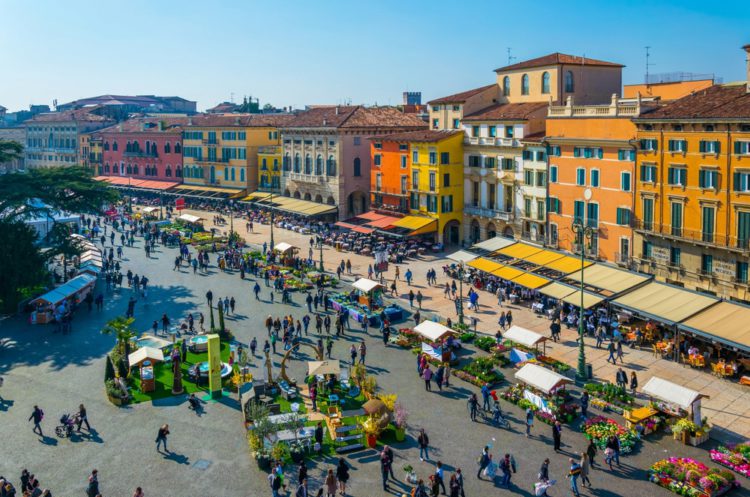What to see in Verona in 1 day by yourself? If you have this question, you are already mentally prepared to immerse yourself in the atmosphere of Shakespeare’s city of tragic love and its cultural heritage. Verona truly deserves its status as the “little Rome.” We have created an optimal route and highlighted the most interesting places in the city so you can cover as much as possible in 24 hours.
Church of San Fermo
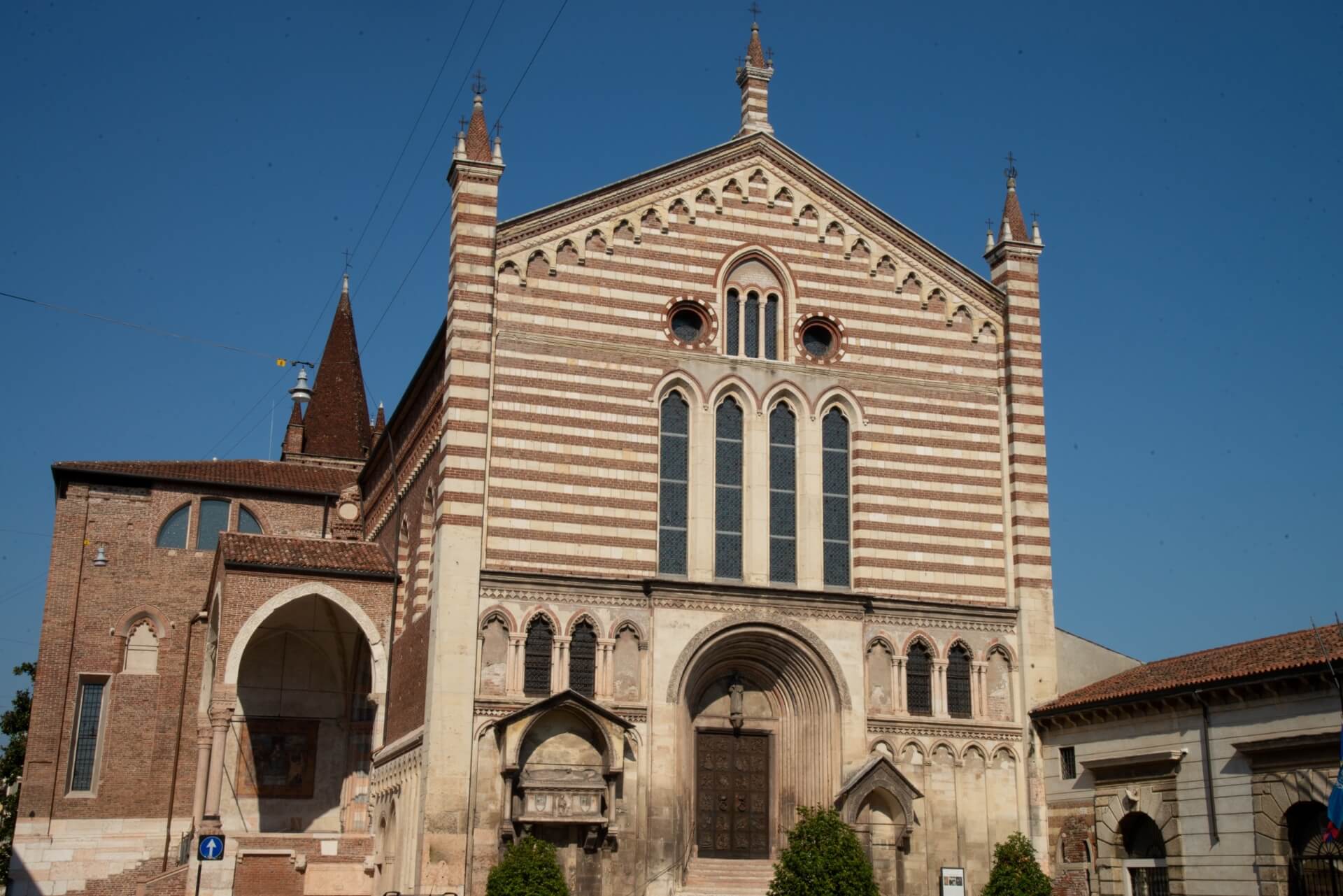
When mentioning the Basilica of San Fermo, most people think of the masterpieces in the upper church, a brilliant example of Gothic architecture. The upper halls house the Della Torre family mausoleum, the splendid sculptural group “Lamentation of Christ,” and frescoes by Pisanello. However, only in the lower church has the spirit of the 11th-century Benedictine order been preserved.
The heavy Romanesque architecture of Verona contrasts with the wooden ribbed ceilings of the upper nave. Here, you can find older frescoes, such as the “Madonna on the Throne with Child and Two Saints,” and several tombstones hidden among a “forest” of pilasters and columns.
Castelvecchio Museum and Castle
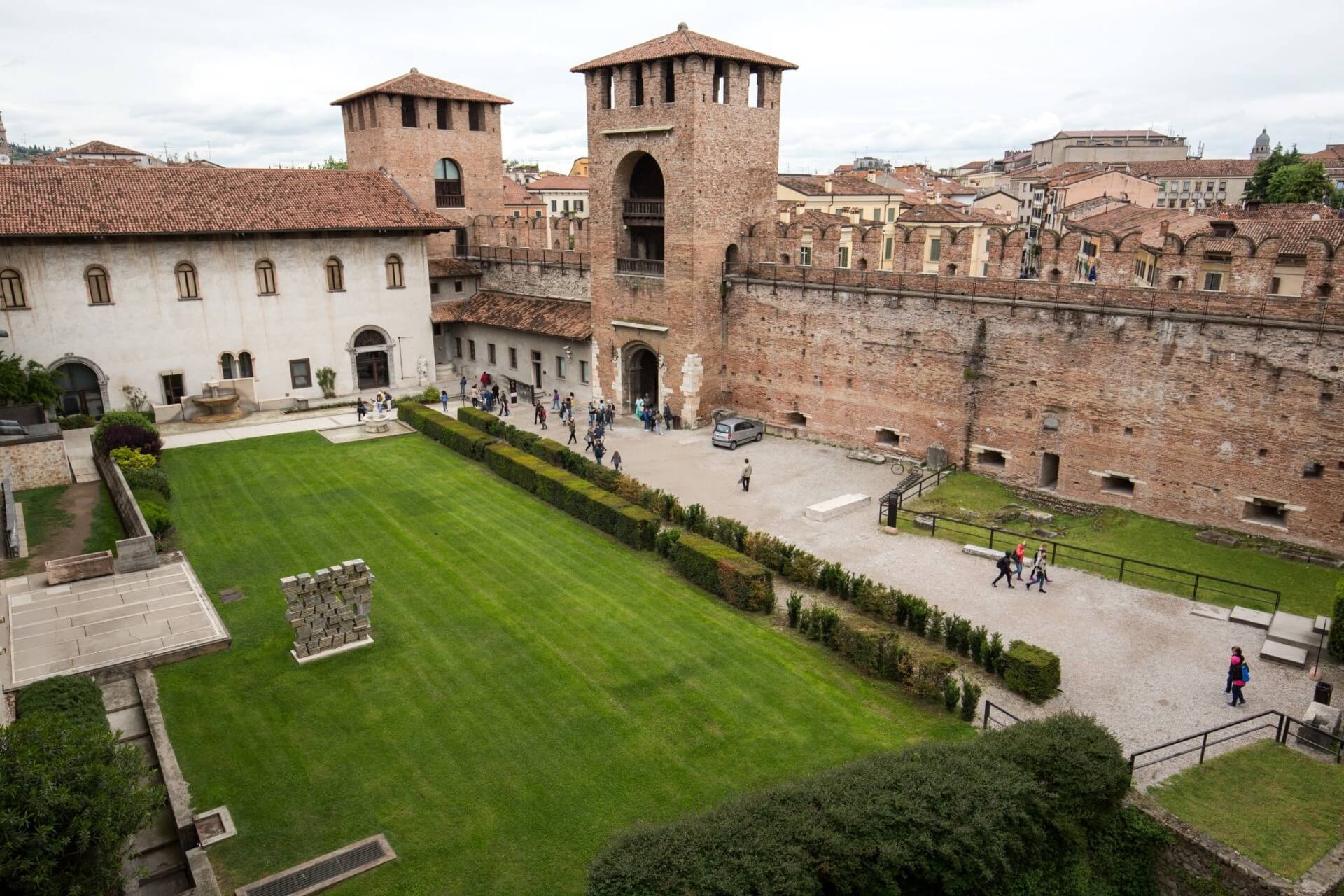
On the left bank of the Adige River stands a prime example of Gothic architecture from the Scaliger era. Built as a fortification, it served its original purpose until the early 20th century when it was decided to house museum collections instead of military barracks.
Remnants of ancient Roman structures made of red brick still remain. You can explore an extensive collection of Romanesque sculptures here. The museum also boasts a painting collection, with works by Pisanello as its highlight. Art enthusiasts will be captivated by the 14th-century paintings and frescoes.
Giusti Palace and Garden
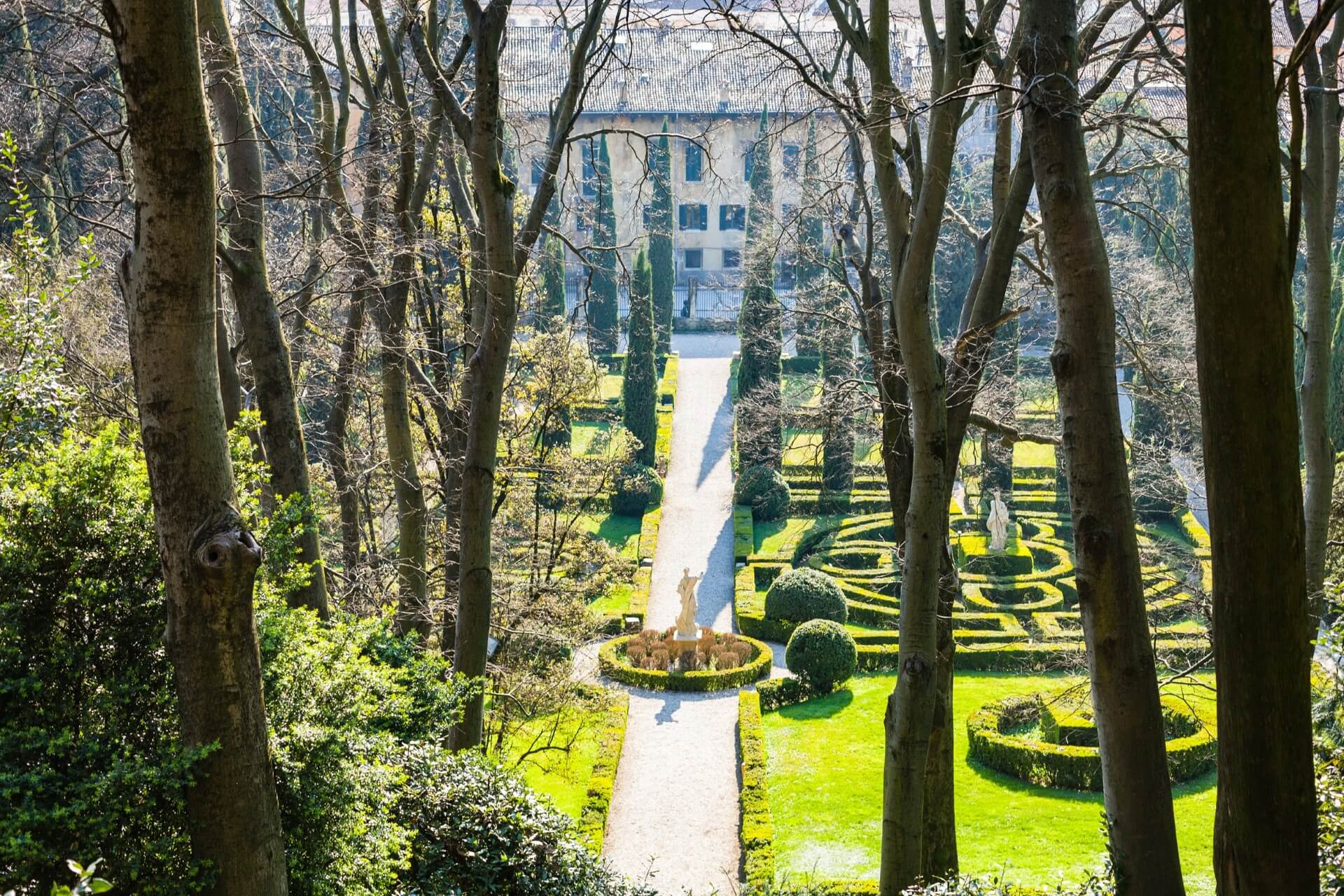
The oldest palace and garden complex at Giusti is nestled among the hills on Verona’s eastern outskirts. The palace is considered atypical because it is located at the foot of the hill rather than closer to its peak. Passing through a closed Romanesque courtyard, you reach a belvedere with panoramic views of Verona.
Below, you’ll find terraces and an ancient grotto with a central sculptural composition. The lush gardens surrounding this elegant palace are still considered among the most beautiful “Italian” gardens of the late Renaissance. No wonder Goethe loved this park. It features one of Italy’s oldest labyrinths, centuries-old cypress trees, statues, and another panoramic viewpoint.
Porta Leoni

The Lion Gate is one of the oldest city gates in old Verona. Built during ancient Roman conquests, it has lost its original name and has appeared under different names throughout Verona’s history. The current name comes quite simply: near the gate is a tomb “guarded” by lions.
Standing before the double facade, notice the small brick wall nearby, a fragment of even older gates likely built in the first century BC. Unfortunately, only the right part of the facade remains today. While the outer facade has not survived, the inner facade, clad in white stone and adorned with twisted columns, still faces Verona’s forum.
Piazza dei Signori
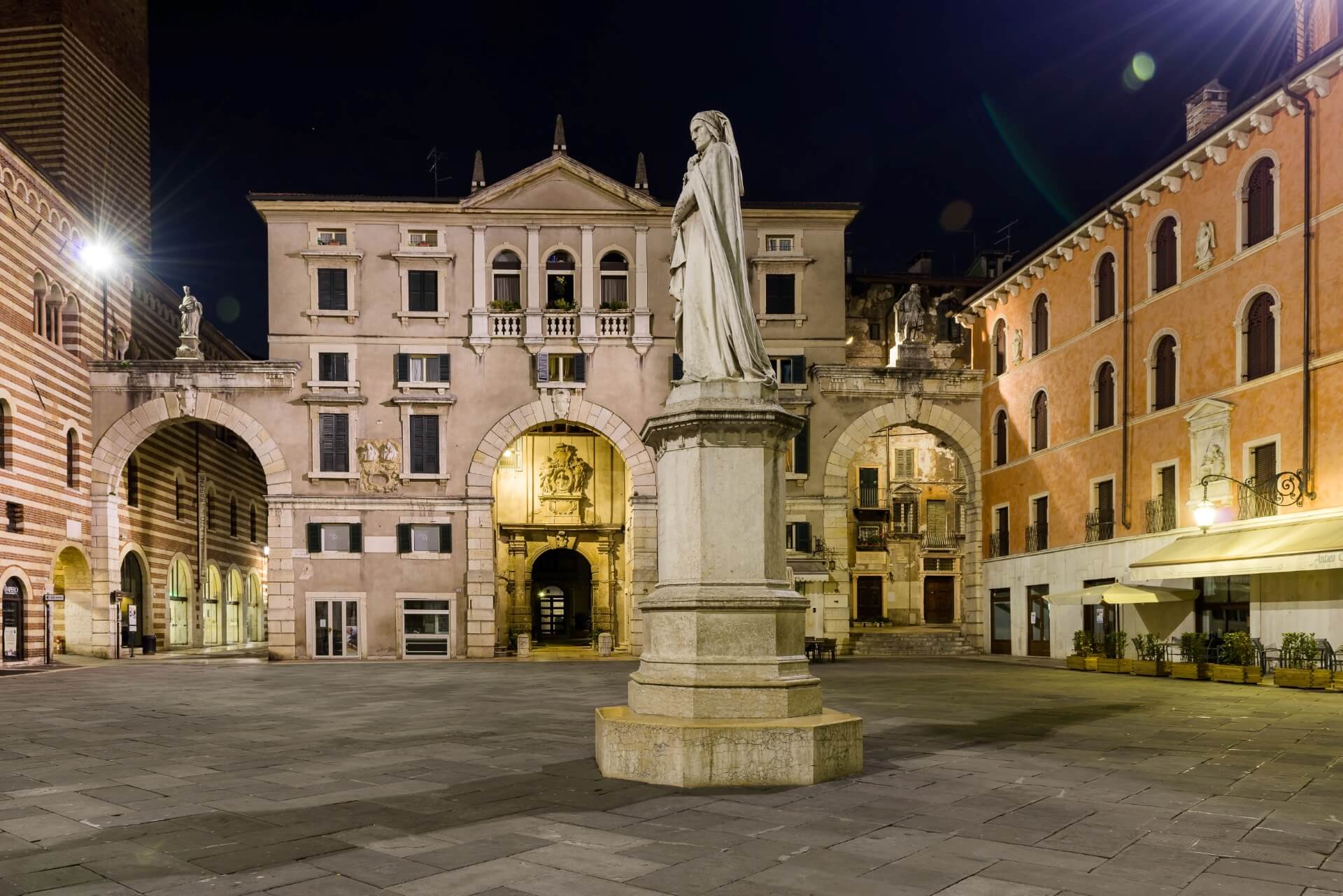
Moving from Piazza delle Erbe, you’ll find yourself in the historic setting of Piazza dei Signori, also known as Dante Square. Once, it combined a political debate arena and the main administrative hub of Verona’s historic center. The central architectural ensemble of the square includes the 12th-century Scaliger Arches, stunning examples of Gothic style.
These richly decorated royal sarcophagi are located near the Basilica of Santa Maria Antica. The ensemble is complemented by the Loggia del Consiglio, decorated by only the best masters, the Palace of Justice with the Lamberti Tower, and other buildings. A marble statue of Dante overlooks the square from its pedestal.
Scaliger Arches
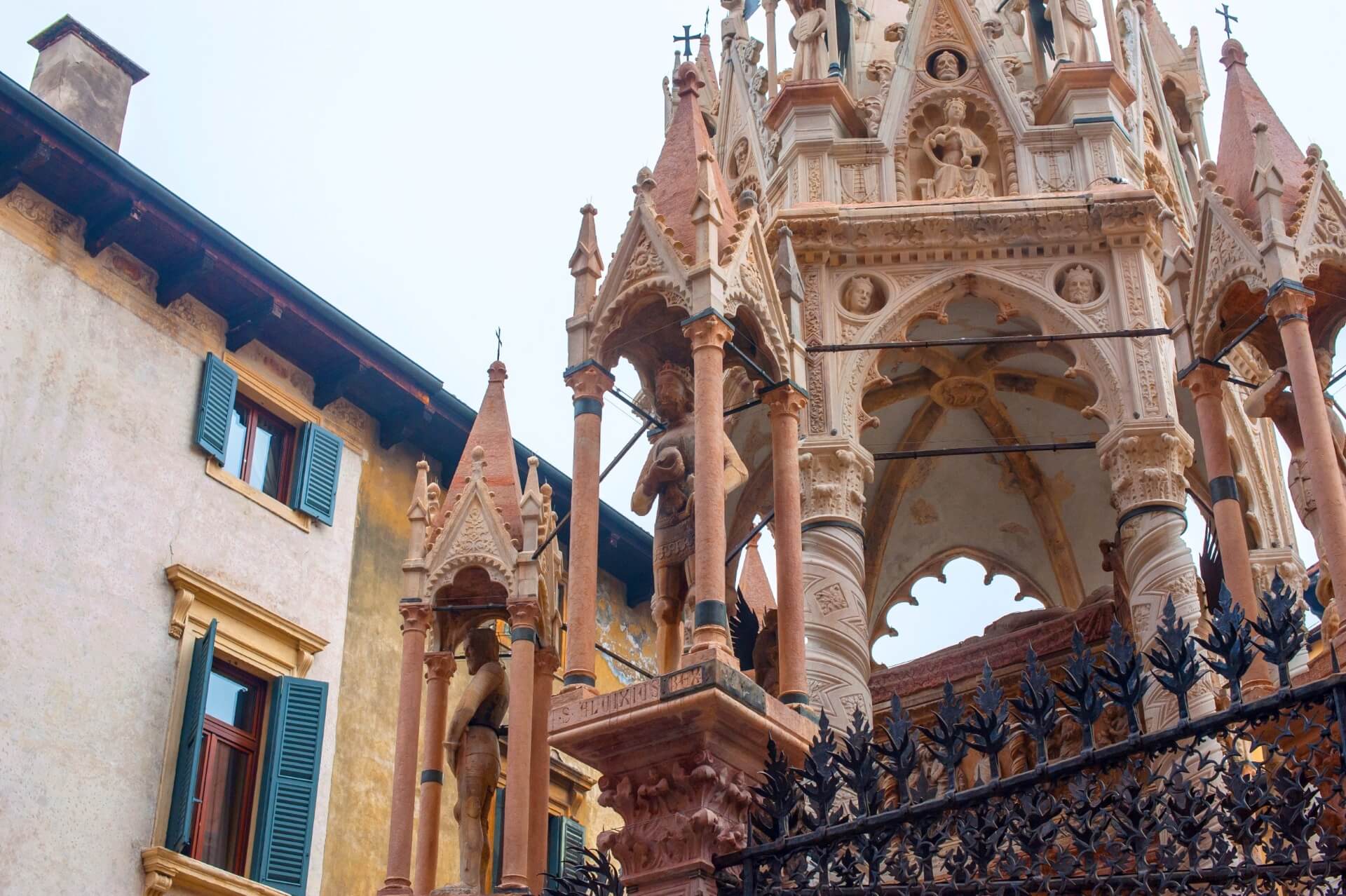
The slender spires of the arches adorning Piazza dei Signori immediately catch the eye. Various shades of brown blend seamlessly into Verona’s urban landscape. These Gothic tombs were inspired by a hanging sarcophagus near the Church of Santa Anastasia. They commemorate rulers from the Scaliger family, who ruled during the Middle Ages.
The tomb of Cangrande I is one of the finest examples of Verona’s sculptural art. Although the author remains unknown, most art historians attribute it to Rigino. The Cansignorio Arch has a hexagonal shape and is adorned with twisted columns. Finally, the Mastino II Arch features a light structure with angels and the deceased ruler himself.
Verona Cathedral
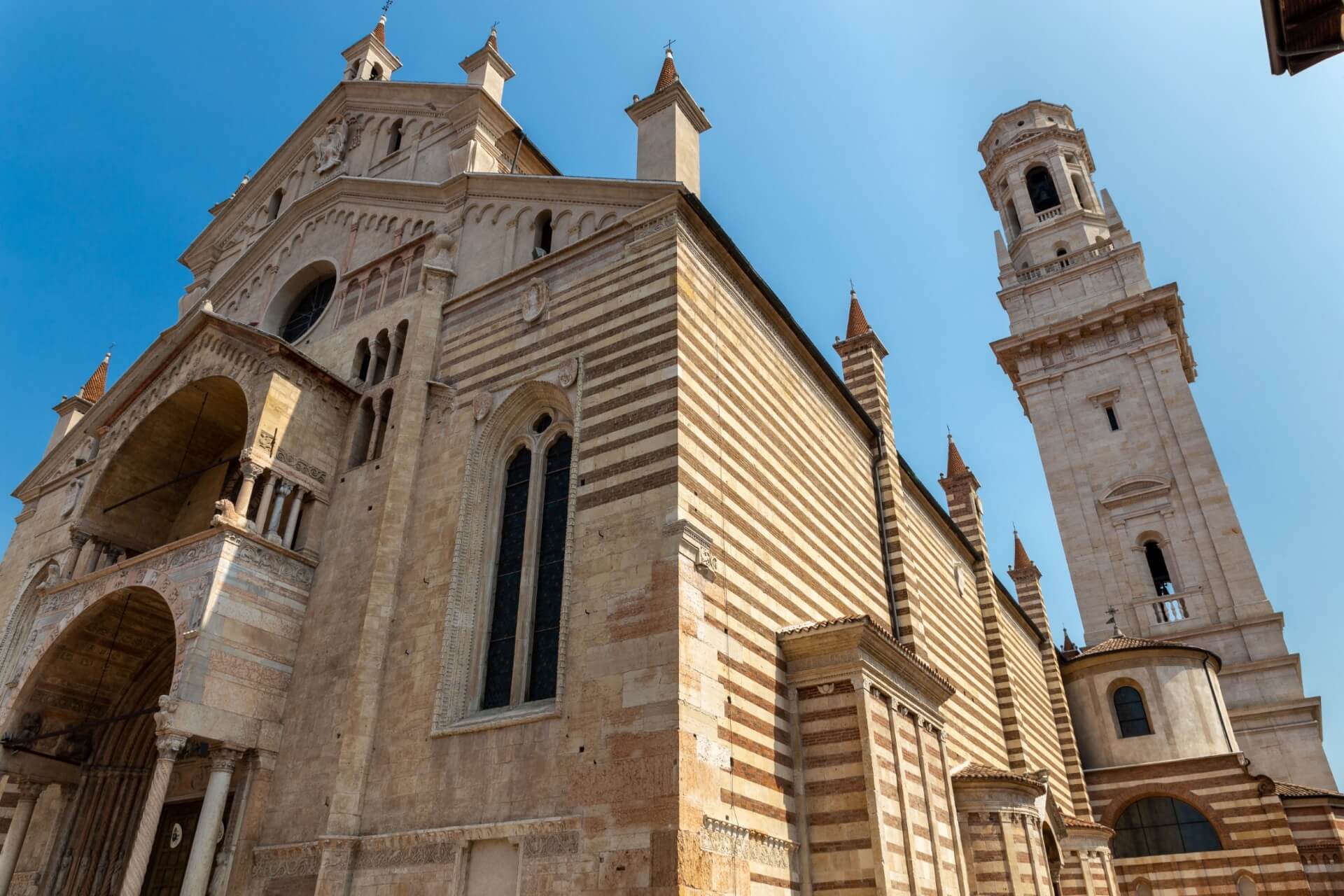
One of the most beautiful cathedrals in the city of Romeo and Juliet, Verona Cathedral combines elements of Romanesque and Gothic styles. The marble facade’s complex composition features three buttresses, the oldest of which was decorated by Nicolaus in the 11th century. The exterior Romanesque-Gothic design transitions into Baroque and Renaissance interiors.
The entire cathedral is like a painted canvas: white and red marble columns, arches with tympanums, prophets, magical creatures, depictions of the Virgin Mary, and saints. The cathedral boasts two organs, adorned with gold and intricate carvings, complemented by 16th-century paintings.
Santa Anastasia
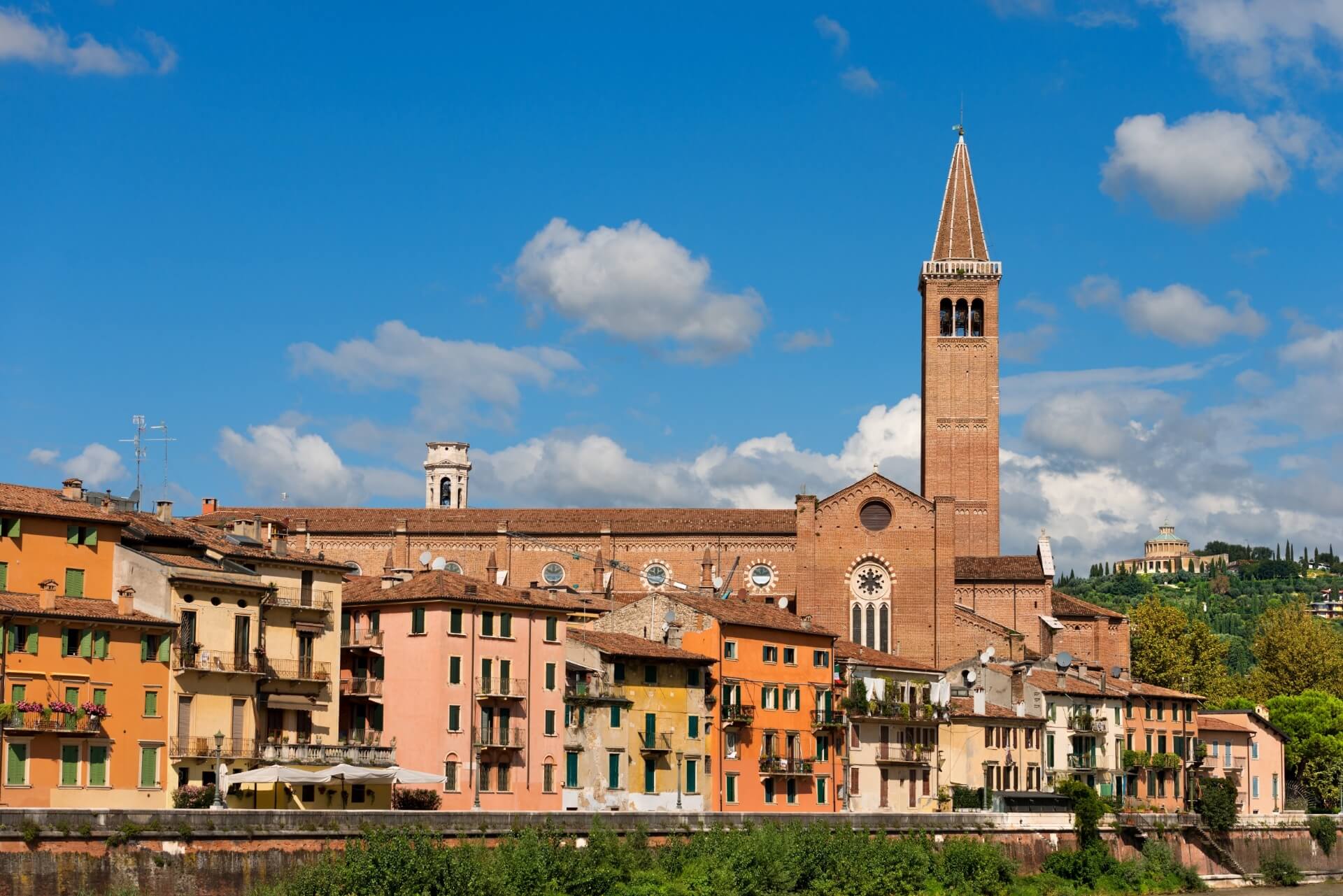
Verona’s largest church belonged to the Dominican order. Located in the city’s oldest part, near Ponte Pietra, it replaced an earlier basilica handed over to the order in the early 13th century. The exterior features a tall bell tower spire and the 14th-century sarcophagus of Guglielmo di Castelbarco.
Be sure to visit the basilica’s interior, where the “hunchbacks of Saint Anastasia” – grotesque sculptural compositions – are as famous as Notre Dame’s gargoyles. The church’s floor is also an artistic marvel, with a gleaming mosaic of gray-blue, white, and pink marble, partially mirroring the portal’s decoration by Pietro da Porlezza.
Porta Borsari Arch
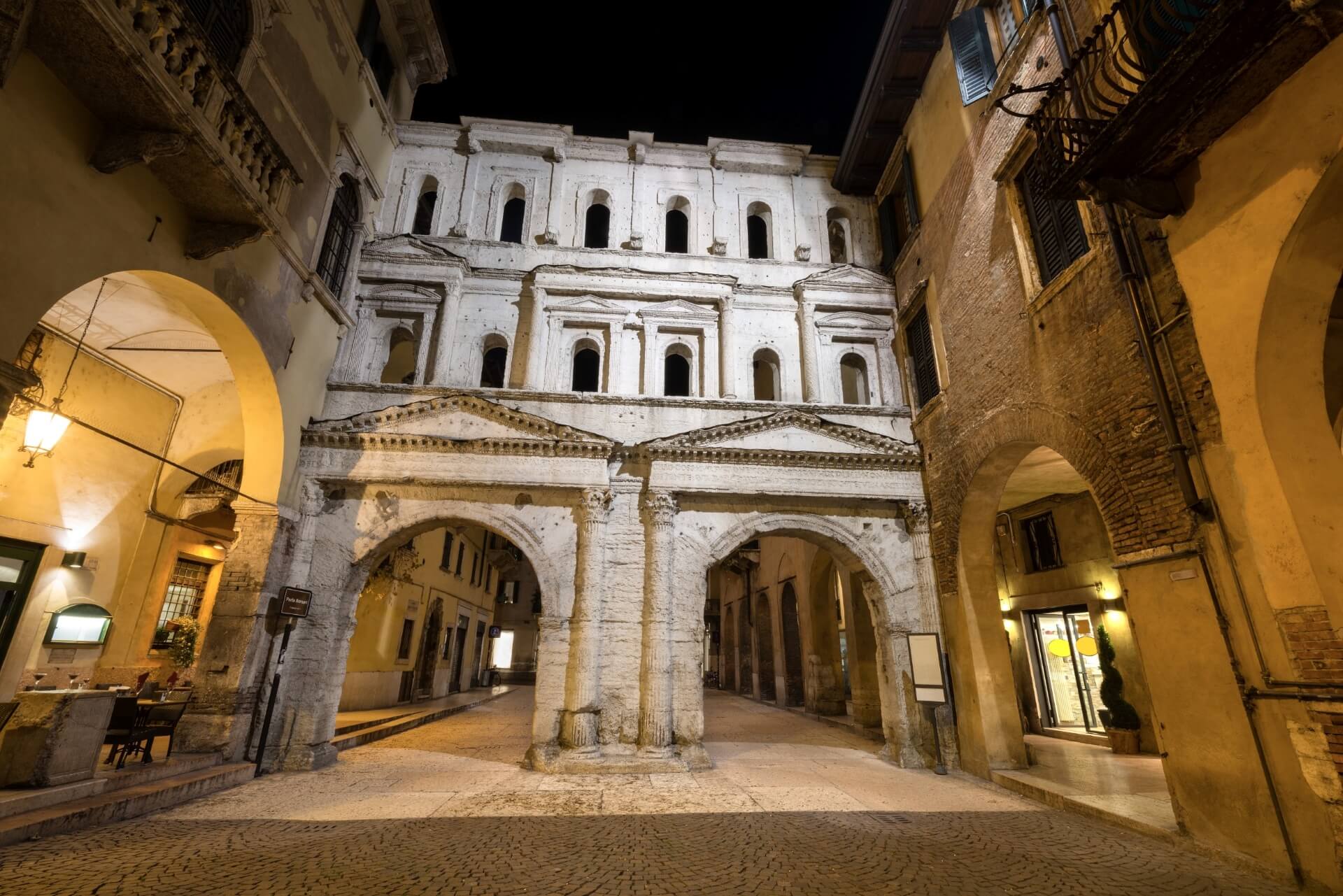
Another ancient gate of Verona, partially preserved to this day, was built as a military outpost at the city’s southern end. Behind the surviving Roman facade were barracks. The Porta Borsari gate was richly decorated from its creation, reflecting its location at the intersection of Verona’s two main streets, running north-south and east-west.
Today, remnants of a small ancient courtyard still adjoin the gate. If you examine the lower tier closely, you’ll find an inscription “Colonia Verona Augusta” carved between the two archways, dating to the mid-3rd century AD.
Palazzo Maffei
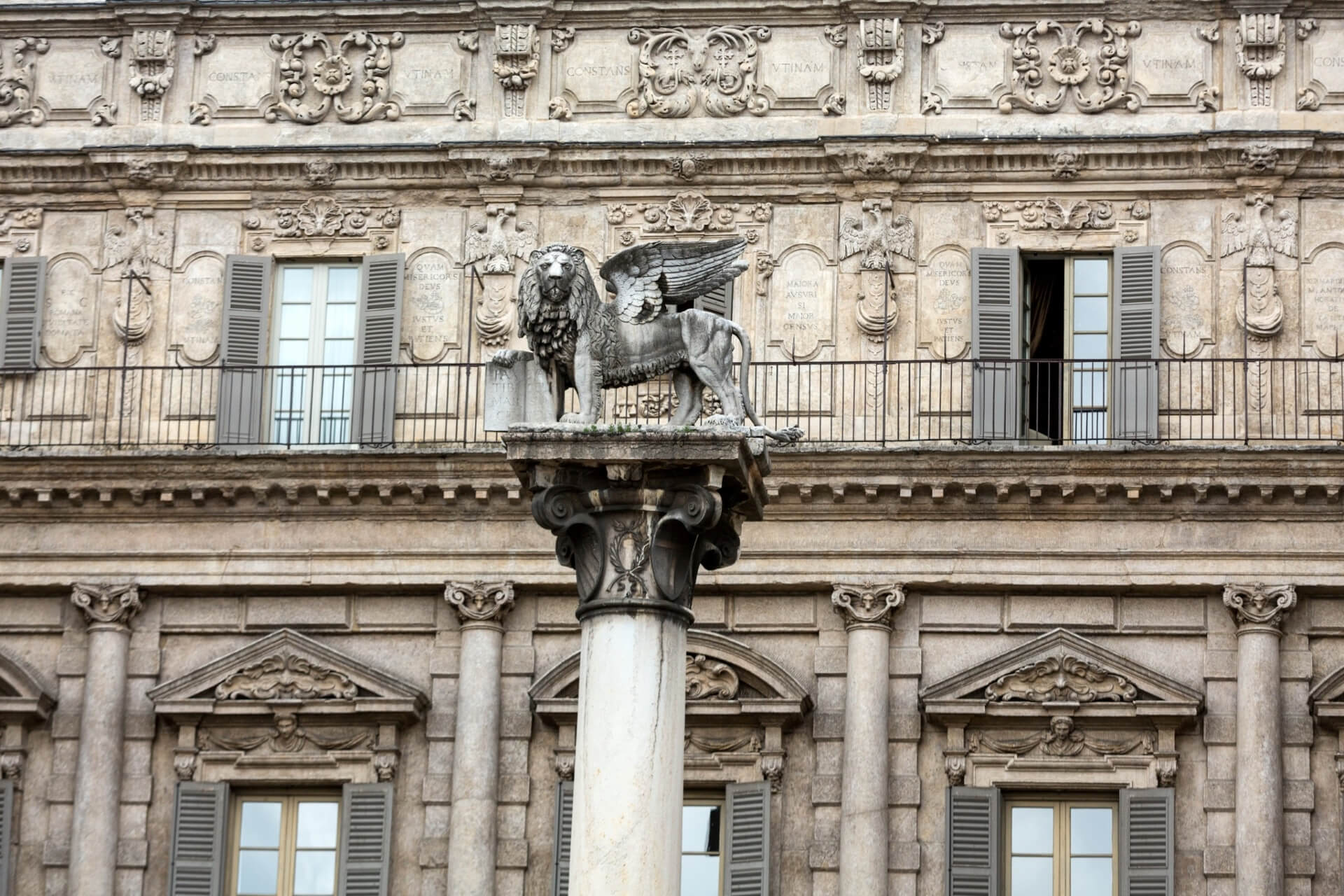
The main attraction of Piazza delle Erbe is Palazzo Maffei, built on the former Roman Forum and Capitoline Hill. Initially planned as a two-story building in the 15th century, the palace ultimately became three stories. Despite nearly two centuries of interrupted construction, its architectural unity remained intact. Baroque grandeur suited Verona’s wealthiest family.
A spiral stone staircase connects the basement and roof, built without a single support. The roof features a well-preserved balustrade with statues of ancient Roman gods and heroes. Today, Palazzo Maffei houses the Palazzo Maffei Verona apartments rather than a museum.
Basilica of San Zeno Maggiore
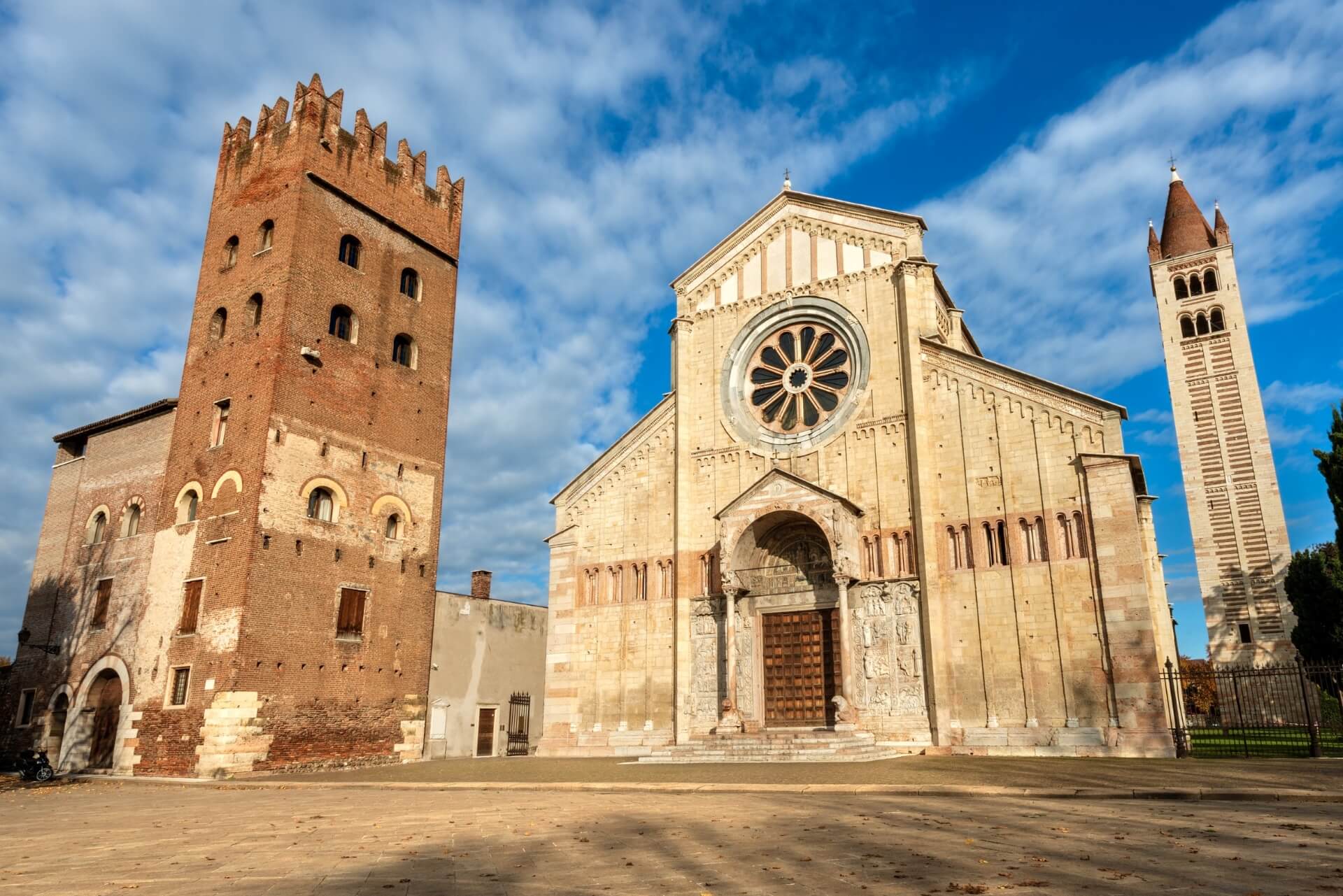
This Romanesque masterpiece appeared on Verona’s architectural map as early as the 7th century. The monumental basilica became the burial site of Bishop Zeno, later canonized. The crypt where Zeno’s remains rest looks genuinely eerie: the decayed bones lie in a transparent sarcophagus, illuminated in the evenings.
Reliefs, statues, and intricate carvings appeared on the basilica’s walls long after its creation. The facade, made of pink marble and golden tuff, appears majestic and somewhat heavy.
Piazza delle Erbe
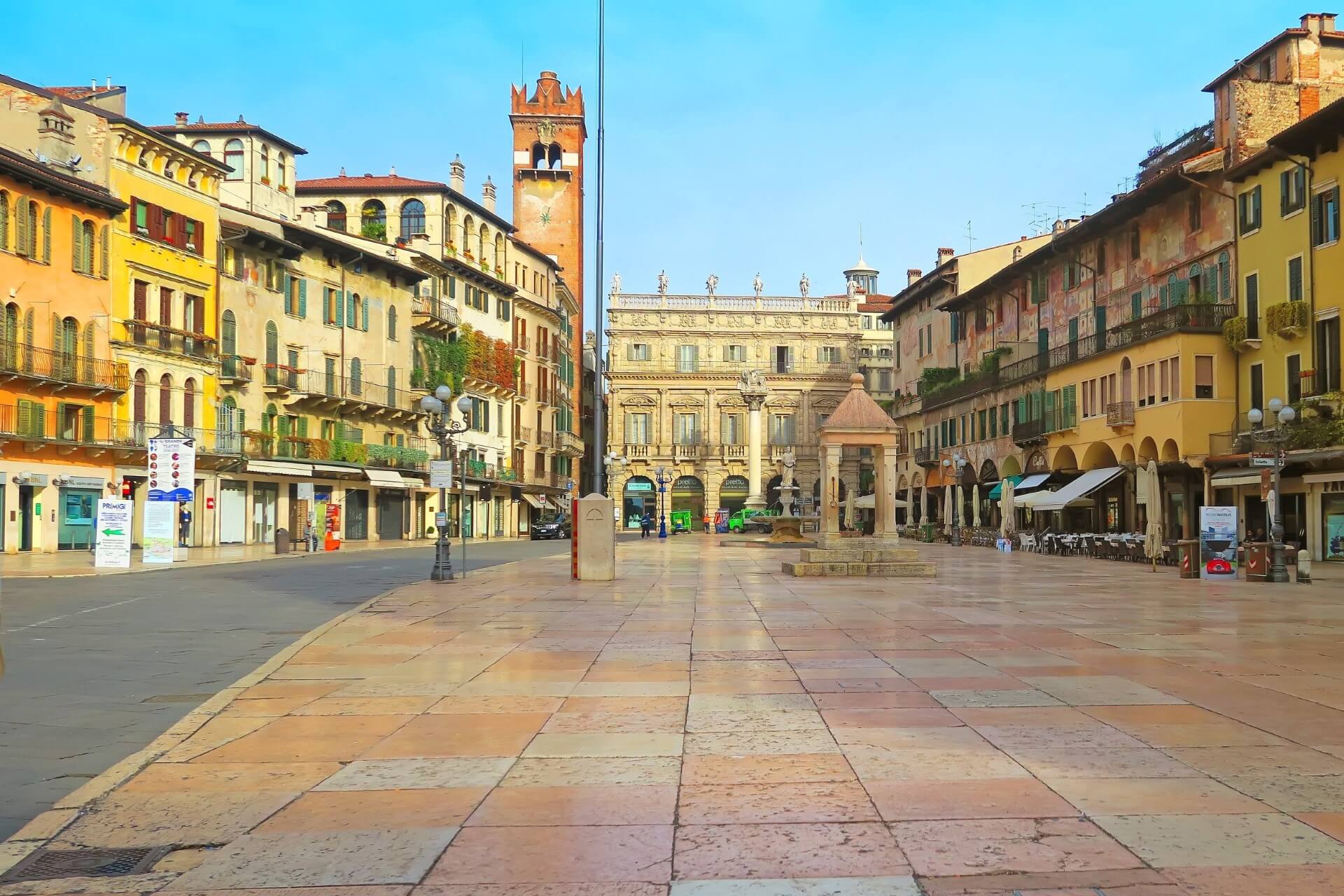
Piazza delle Erbe, or Herb Square, is nestled on the ruins of an ancient forum. During the day, it buzzes with thousands of tourists eager to see Verona’s central square. It’s best to visit in the evening, especially on Sunday evenings. Why Sunday? It’s simple.
Sunday is the best day to sit at Osteria al Canton with a glass of Italian wine and fully appreciate the beauty of Piazza delle Erbe. On Sundays, market stalls disappear, allowing an unobstructed view of the square’s splendor, including Palazzo Mazzanti, Lamberti Tower, the Madonna Fountain, and other landmarks.
Wall of Love
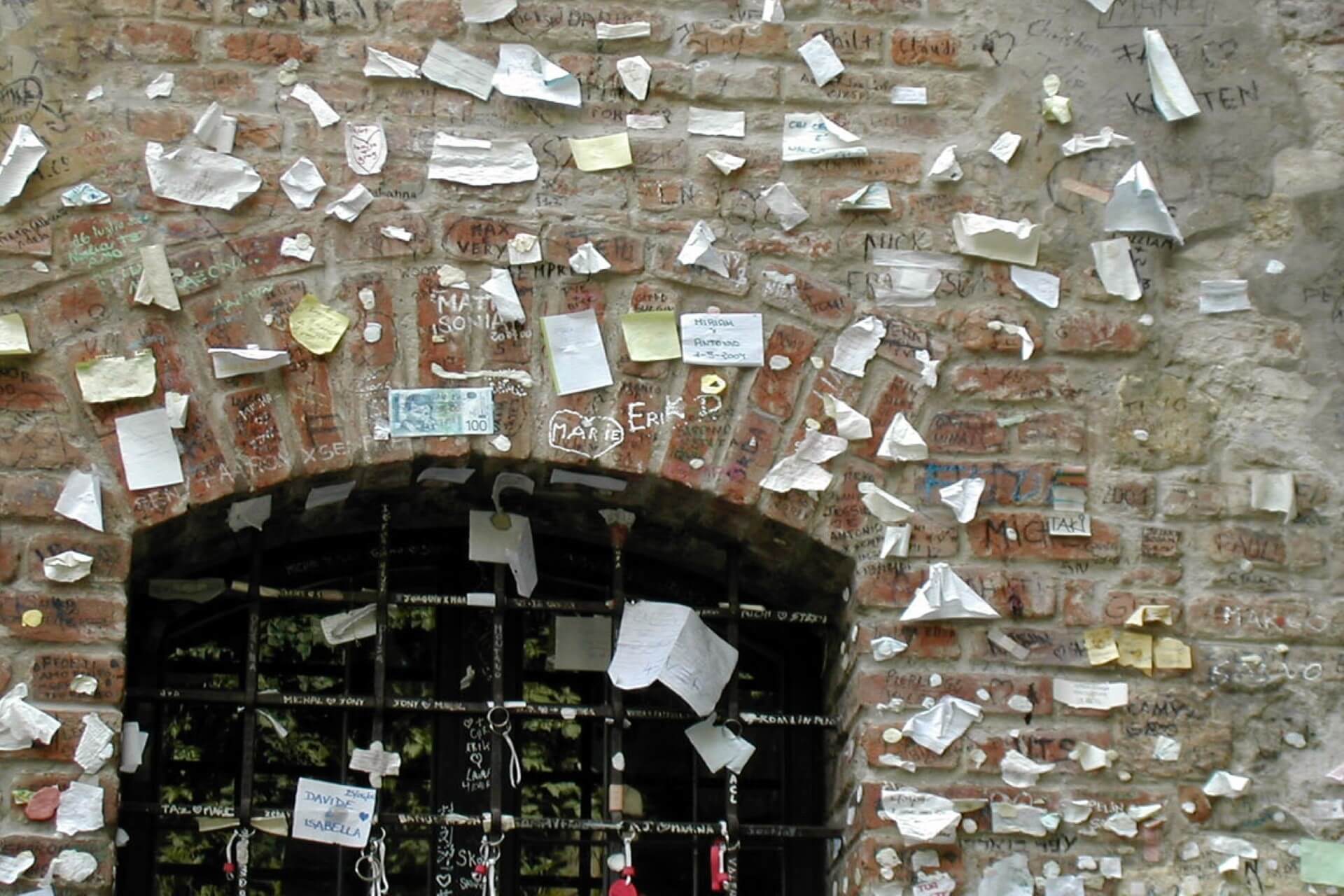
To reach Juliet’s balcony, you’ll pass through a small archway covered with thousands of love declarations from the ground to the beams. The inscriptions are so numerous that they overlap, creating a colorful multilingual mosaic.
The wall seems to counter Shakespearean tragedies – local Romeos and Juliets find their happy ending or beginning in Verona. Even if you arrive without a partner, don’t worry – many write not only love declarations but also wishes for love for themselves and their loved ones.
Juliet’s House
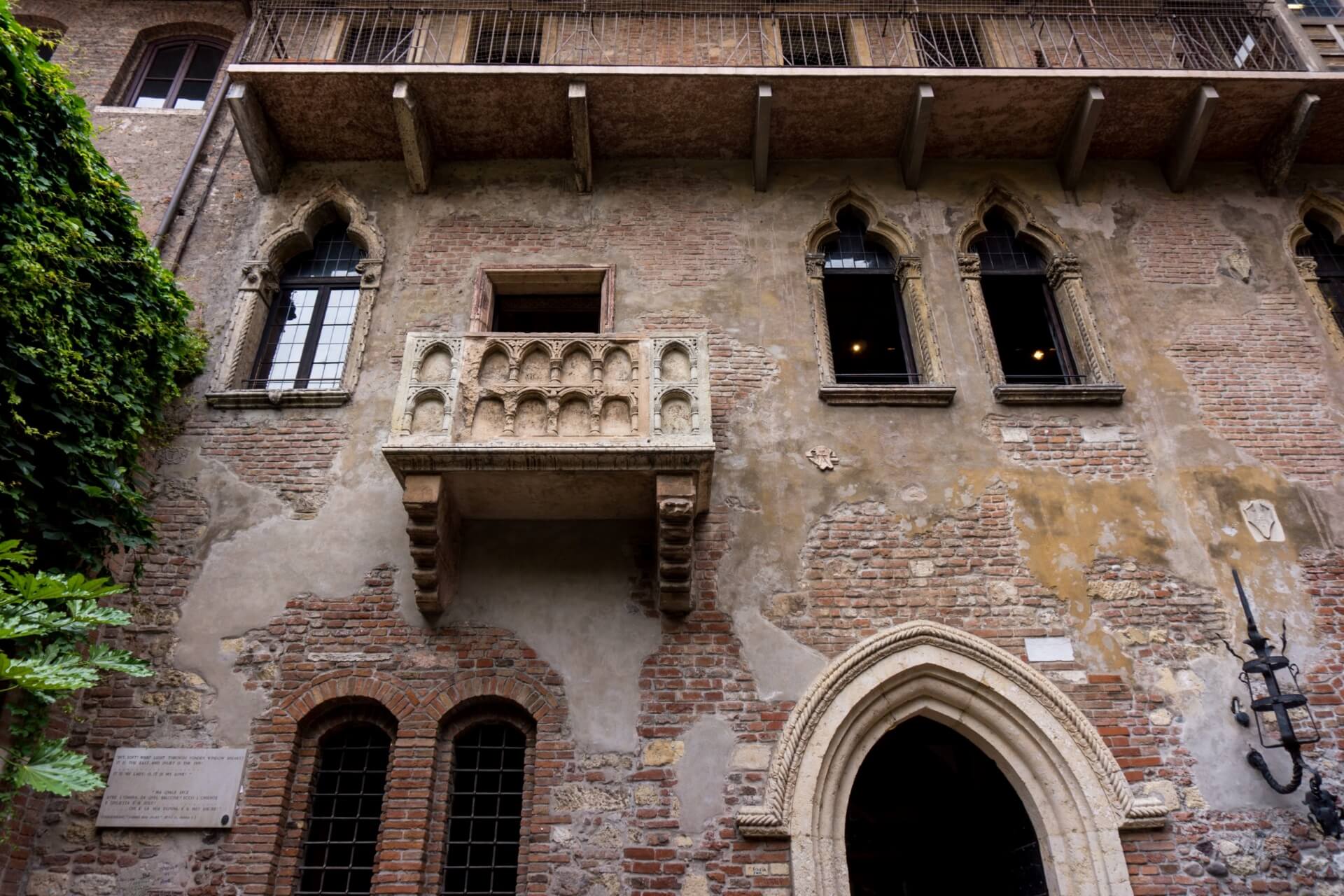
Strangely, the great dramatist who gave the world “King Lear,” “Hamlet,” “Romeo and Juliet,” and other famous plays never visited Verona. But fans of the play about star-crossed lovers decided that since the events were set in Verona, finding a suitable setting was necessary. Thus, Juliet’s House, or rather, the Capulet House, was born.
Hundreds of thousands of tourists flock daily to the small courtyard where Romeo confessed his love under the carved balcony. A bronze statue of Juliet stands here, and touching her right breast is said to bring good luck. You can enter the courtyard for free.
Lamberti Tower
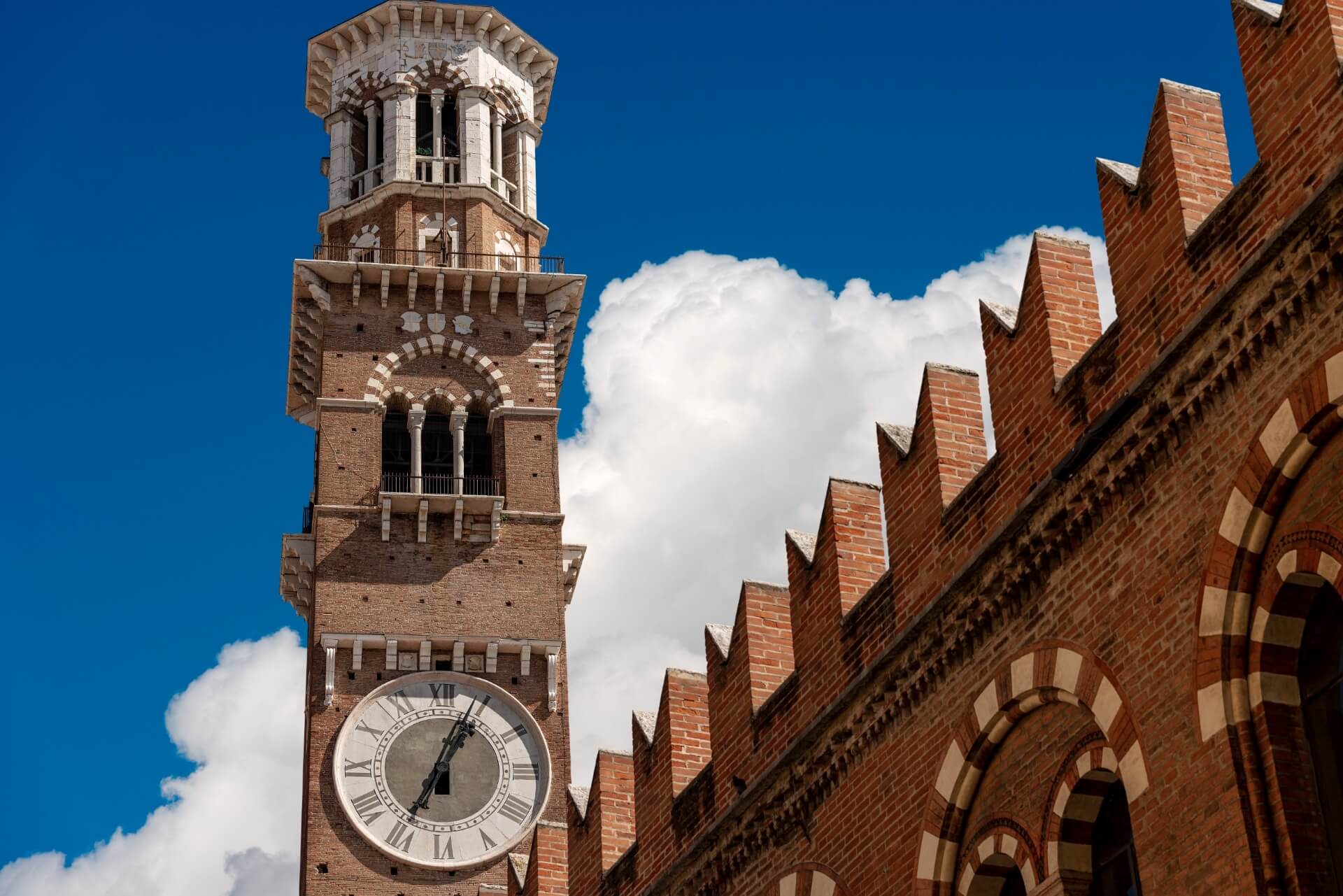
Lamberti Tower remains Verona’s tallest structure, though it wasn’t always so. Named after the Lamberti family, who financed its construction, the tower’s foundation was laid in the 12th century as part of the Palazzo della Ragione. However, lightning severely damaged the tower during a storm.
During reconstruction, as new floors were added, the builders stopped trying to maintain the original style: the lower floors are made of a mix of tuff and brick, followed by purely brick medieval walls and then a marble bell tower. The entrance fee includes access to the modern art gallery.
Verona Arena
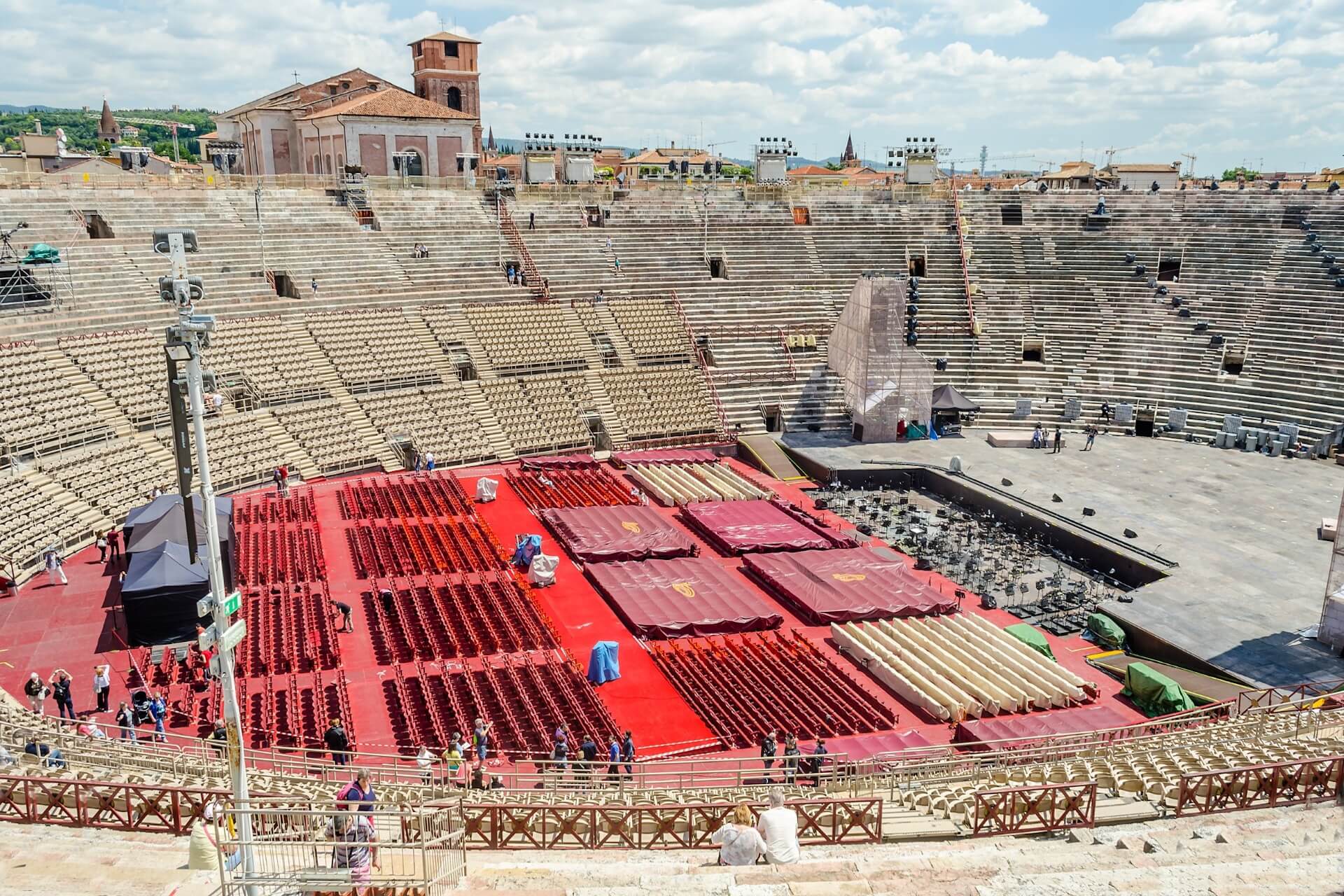
Verona Arena is a monumental pink marble amphitheater built by the ancient Romans. It is Italy’s third-largest such structure and recently turned 2,000 years old! The architects of the past centuries achieved remarkable acoustics, making the Arena a premier venue for opera concerts today.
Connoisseurs agree that the best performances of “Romeo and Juliet” are held here, although such shows are only possible in warm weather. Concert tickets are sold separately.
Palazzo della Ragione and the Most Photographed Staircase
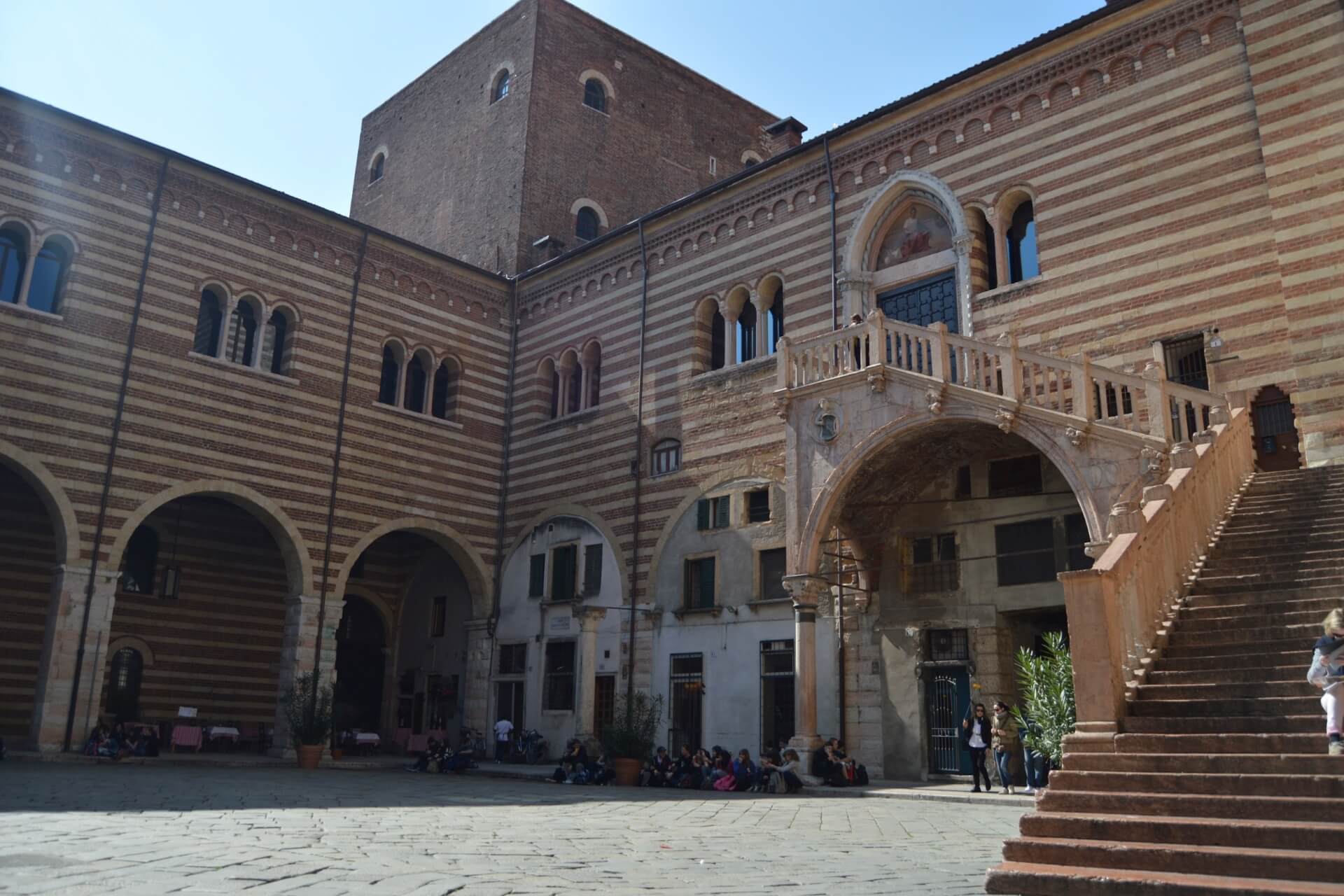
Palazzo della Ragione, a historic building that survived several destructions since its 12th-century construction, retained its unique authentic appearance. The square-shaped palazzo covers over 2,000 square meters, making it one of the largest medieval structures.
Although primarily Romanesque, the facade facing Piazza delle Erbe is Neoclassical, while the second facade features High Renaissance elements. The only way to the main tower is via a massive marble staircase. Visiting the interior, with its frescoes, paintings, and sculptures, requires an entry fee.
Castel San Pietro – Viewing Platform

The fortress built on the site of an ancient Roman temple was named after the Apostle Peter. Its location on a hill surrounded by the Adige River provided a strategic advantage, offering a panoramic view of Verona.
The modern viewing platform offers a fantastic city view. The castle was abandoned for many years and is now undergoing active restoration. The current plan includes opening a museum within the castle. Entry is free, but the climb is strenuous as the funicular has been out of service for years.
Tips for Tourists from a Local
- While walking around Verona, look not only at your feet but also up.
- If you want to find places locals frequent, don’t hesitate to leave tourist paths and explore side streets.
- Visit via Mazzini only if you’re planning to shop.
- To visit as many museums as possible without spending much, plan your trip for the first Sunday of the month. On this day, most museums offer free or symbolic entry.
- Consider getting a VeronaCard for a more extensive tour. Various types of cards are available, with popular options covering 24 and 48 hours. This card allows access to 20 attractions, including Verona Arena, Juliet’s House, Basilica of Saint Anastasia, and other tourist spots.

